Suppression Measures of Partial Discharge at Rod–Plate Connection in Composite Tower
Abstract
1. Introduction
2. Artificial Pollution Test
2.1. Test Devices
2.2. Test Procedure
2.3. Test Results
3. Current Density Simulation
3.1. Original Simulation Model of Rod–Plate Connection
3.2. Current Density Simulation of Improved Composite Plate Connection Structure
3.3. Simulation of Improved Metal Plate Connection Structure
4. Validation Test and Discussions
4.1. Validation Test for the Improved Composite Plate
4.2. Validation Test for the Improved Metal Plate
5. Conclusions
- (1)
- For the original composite plate connection, there is a local temperature rise near the metal bolt and rod–plate articulation area, and the rod–plate articulation area experiences the most serious heating effect. For the original metal plate connection, the metal plate itself, as a whole, as a suspended potential body has almost no heating phenomenon, but the rod–plate articulation temperature rise is more significant;
- (2)
- For the composite plate connection, a parallel round composite plate connection form is proposed as an improvement measure. The parallel round composite plate increases the rod–plate articulation area, makes the edges that cause the current field distortion more smooth, so that the current density distribution is more uniform. Therefore, the current density near the bolt also decreases;
- (3)
- The improvement measure of the metal sleeve is proposed for the connection of the metal plate. After the connection of the metal plate is changed into the form of the metal sleeve connection, the current density distortion in the junction area of the composite rod and metal part is suppressed because the contact surface perimeter of the connection is increased, and the structure is well-proportioned. The temperature rise of the improved connection is significantly slowed down, the dry band formation time is also significantly increased, and the dry band discharge intensity is also weakened, which proves that the improvement measures can effectively suppress the local temperature rise and dry band formation.
Author Contributions
Funding
Data Availability Statement
Conflicts of Interest
References
- Stewart, R. Pultruded Poles Carry Power. Reinf. Plast. 2003, 47, 20–24. [Google Scholar] [CrossRef]
- Ramirez-Vazquez, I.; Hernández-Corona, R.; Salgado-Talavera, J.E. Composite Materials As an Alternative to Replace Steel Members on Lattice Power Transmission Towers. J. Mater. Civ. Eng. 2016, 28, 04015151. [Google Scholar] [CrossRef]
- Lin, Y.; Huchang, W.; Xueling, Z. Application Research of FRP in the Transmission Structures. Electr. Power 2014, 47, 53–56. [Google Scholar]
- Zhijun, L.; Weijiang, C.; Tong, Z.; Min, D.; Wendong, J.; Cancan, W.; Zongxi, L. Electrical Structure Design of Lattice Composite Material Tower of 110 kV Double Circuit Transmission Line. Power Syst. Technol. 2015, 39, 536–542. [Google Scholar]
- Lei, Z.; Mingzhu, Z.; Yabo, L.; Huadong, L.; Chaokai, T.; Zhaoyin, S.; Zhiwei, W. Structure Analysis of Carbon Fiber Reinforced GFRP Transmission Tower. Eng. Plast. Appl. 2018, 46, 95–100. [Google Scholar]
- Alshurafa, S.; Polyzois, D. Design Recommendations and Comparative Study of FRP and Steel Guyed Towers. Eng. Sci. Technol. Int. J. 2018, 21, 807–814. [Google Scholar] [CrossRef]
- Valdez, A.H.; Vázquez, I.R.; Corona, R.H.; Vazquez, J.V.; Noyola, D.P.; Luisillo, A.B.; Hurtado, C.H.; Silva, A.P. Connection Method Design for Redundant Elements of Composite Materials for Transmission Towers. In Proceedings of the 2016 IEEE PES Transmission & Distribution Conference and Exposition-Latin America (PES T&D-LA), Morelia, Mexico, 20–24 September 2016; pp. 1–5. [Google Scholar]
- Huanhuan, L.; Xiaodong, Z.; Rui, K.; Lijun, Y. FEM Structure Design of 10kV Composite Transmisson Tower and The Application Study of Engineering. Fiber Reinf. Plast. Compos. 2015, 330, 69–73. [Google Scholar]
- Sihua, W.; Junjun, W.; Lei, Z.; Long, C. Influence of Pollution Components on Surface Electric Field of Composite Insulators. Electr. Power 2021, 54, 149–157. [Google Scholar]
- Hongwei, M.; Chenlong, Z.; Haiqi, D.; Liming, W.; Zhicheng, G.; Fuzeng, Z. Wetting Characteristics of Contaminated Porcelain and Glass Insulators. Proc. Chin. Soc. Electr. Eng. 2014, 34, 1471–1480. [Google Scholar]
- Yu, W.; Lin, M.; Wankun, W.; Wei, W.; Huan, P.; Xishan, W.; Lei, L. Research on Characteristics of Partial Electric Arc on Contaminated Insulating Surface Attached With Floating Potential Metal. Proc. Chin. Soc. Electr. Eng. 2019, 39, 3253–3261. [Google Scholar]
- Zhijun, L.; Weijiang, C.; Wendong, J.; Cancan, W.; Min, D.; Zongxi, L. Pollution Performance of Lattice Composite Material Tower of 110 kV Double Circuit Line. High Volt. Eng. 2015, 41, 1320–1327. [Google Scholar]
- Lan, L.; Mu, L.; Wang, Y.; Wang, W.; Fu, Z.; Wen, X. Study on Dry Band Discharge of Wet Polluted Surface with Float Potential Metal by Electro-Thermal Synchronous Observation. IET Sci. Meas. Technol. 2020, 14, 789–796. [Google Scholar] [CrossRef]
- Andoh, M.-A.; Gbah, K.; Volat, C. Development of a Simple Experimental Setup for the Study of the Formation of Dry Bands on Composite Insulators. Energies 2022, 15, 5108. [Google Scholar] [CrossRef]
- Slama, M.E.A.; Albano, M.; Haddad, A.M.; Waters, R.T.; Cwikowski, O.; Iddrissu, I.; Knapper, J.; Scopes, O. Monitoring of Dry Bands and Discharge Activities at the Surface of Textured Insulators with AC Clean Fog Test Conditions. Energies 2021, 14, 2914. [Google Scholar] [CrossRef]
- Zhang, D.; Meng, F. Research on the Interrelation between Temperature Distribution and Dry Band on Wet Contaminated Insulators. Energies 2019, 12, 4289. [Google Scholar] [CrossRef]
- Nouir-Masmoudi, H.; Dhahbi-Megriche, N. Effect of Pollution Layer Discontinuity Due to the Dry Bands Presence on Potential and Electric Field along Insulator. In Proceedings of the 2022 5th International Conference on Advanced Systems and Emergent Technologies (IC_ASET), Hammamet, Tunisia, 22–25 March 2022; IEEE: Hammamet, Tunisia, 2022; pp. 233–238. [Google Scholar]
- Lijun, J.; Zhiren, T.; Kai, G.; Rong, X. Discrimination of Insulator Contamination Grades Using Information Fusion of Infrared and Visible Images. Proc. Chin. Soc. Electr. Eng. 2016, 36, 3682–3691. [Google Scholar]
- Zhicheng, Z.; Chenlong, Z.; Song, G.; Mingmin, W.; Yang, L.; Fengbo, T.; Liming, W. Analysis on Wetting and Conductive Properties of Natural Polluted Insulators. High Volt. Eng. 2014, 40, 3680–3687. [Google Scholar]
- Yi, S. Contamination Degree Evaluation Model for Insulator Based on Surface Polluted Layer Conductivity. High Volt. Appar. 2014, 50, 106–110. [Google Scholar]
- Liming, W.; Bo, Z.; Xiaobo, M.; Hongwei, M.; Zhicheng, G.; Jun, Z. Experimental Study on Streamer Discharge Characteristics Along Contamination Insulator Surface. High Volt. Eng. 2014, 40, 972–978. [Google Scholar]

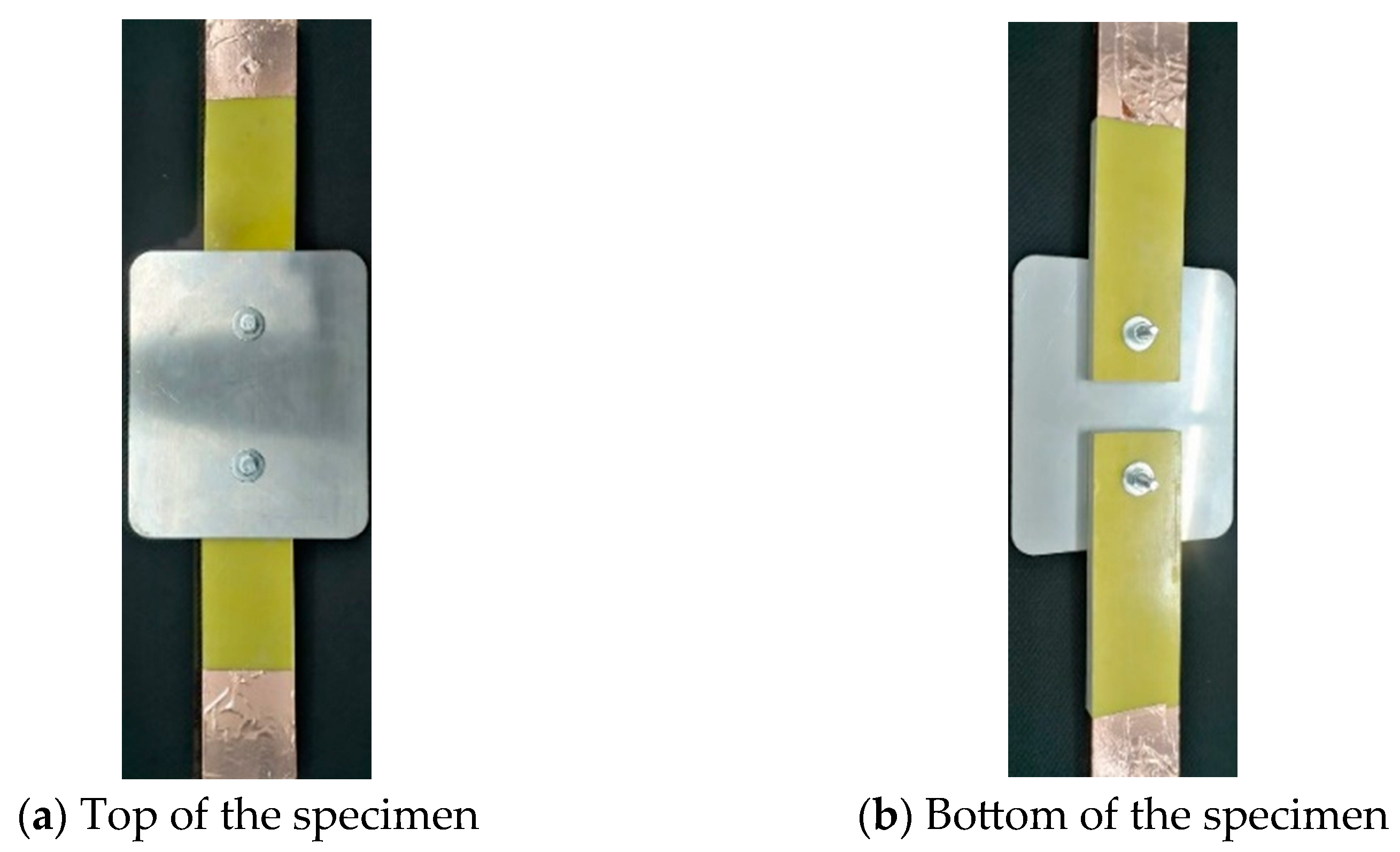


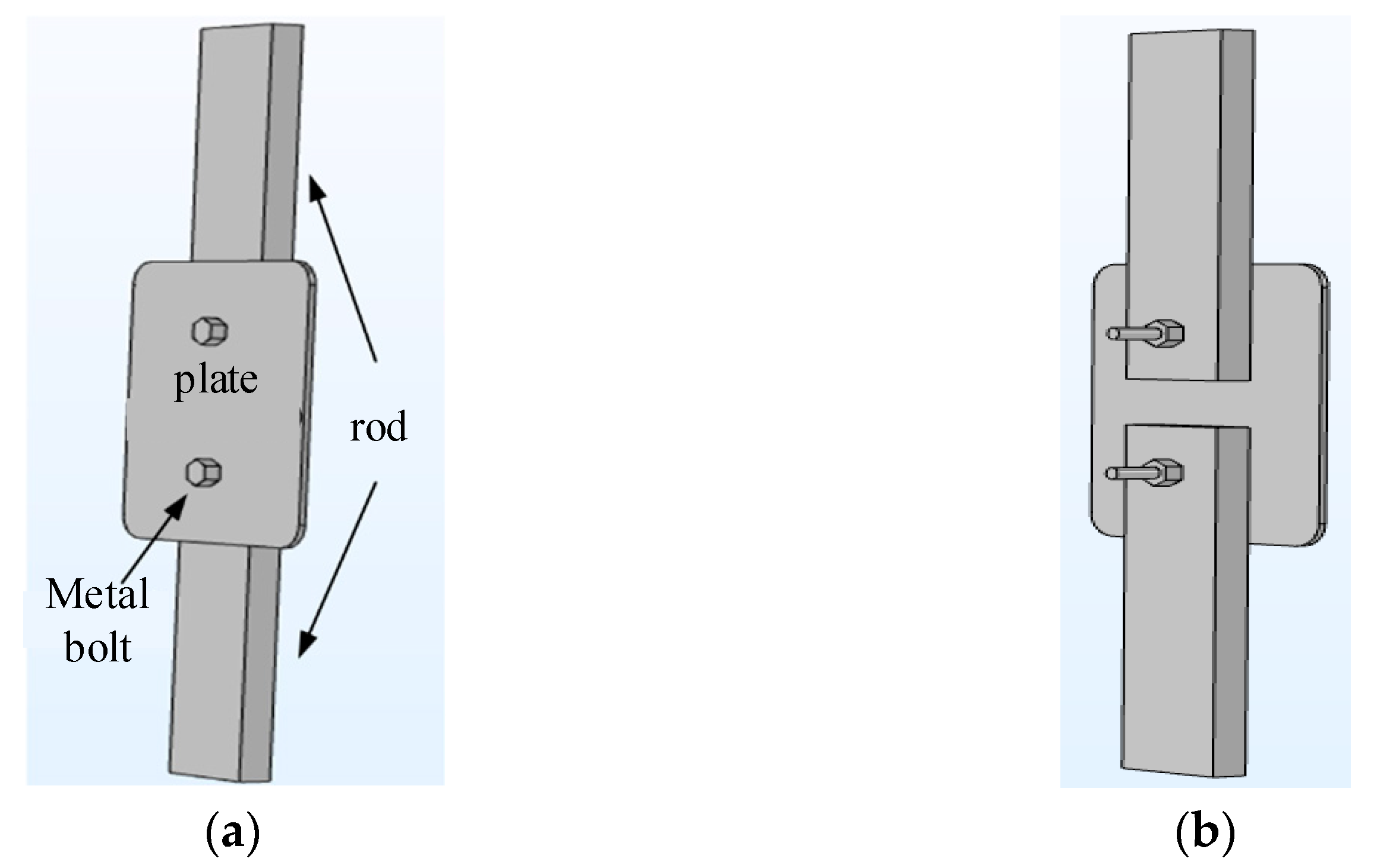
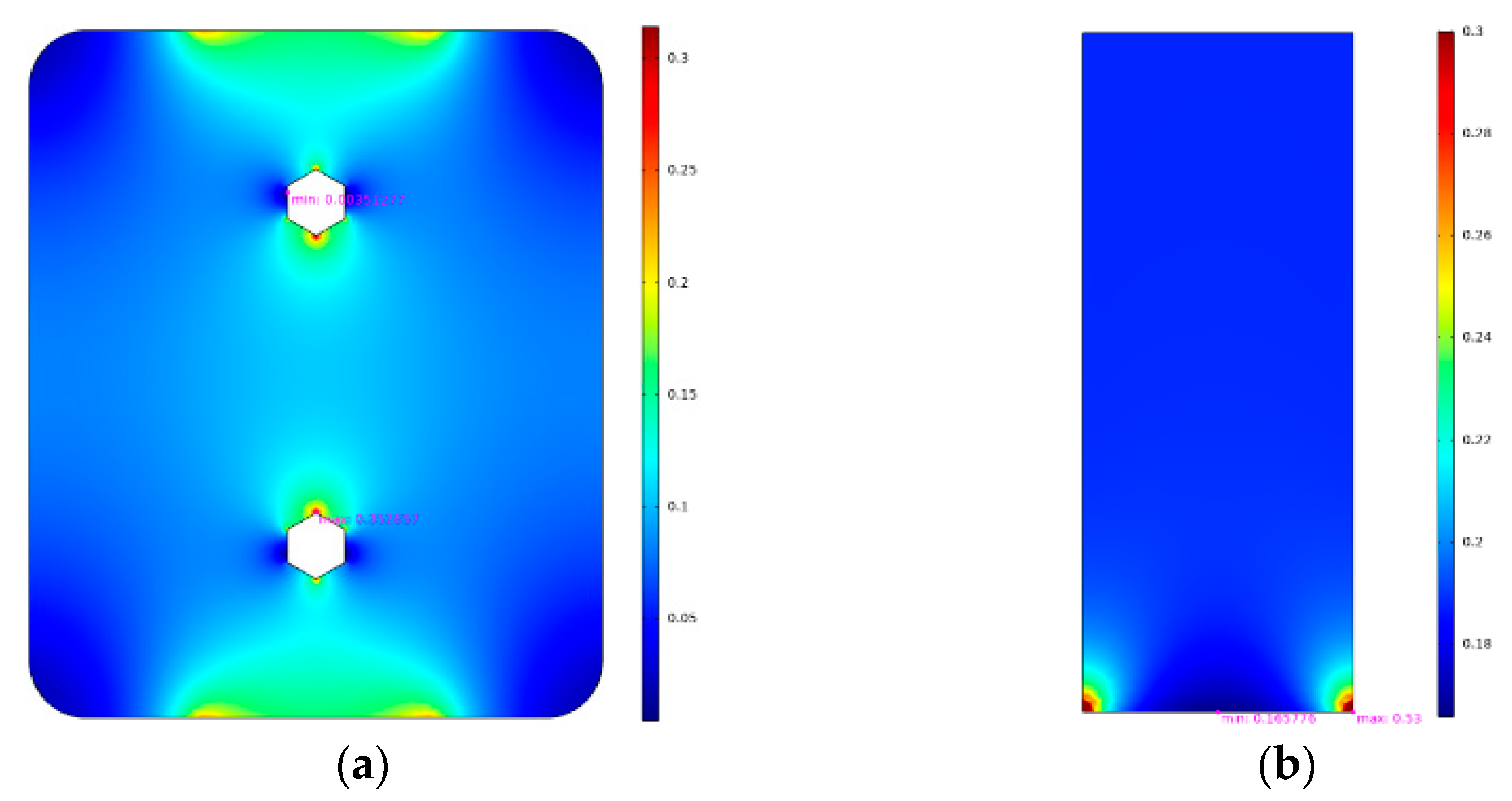
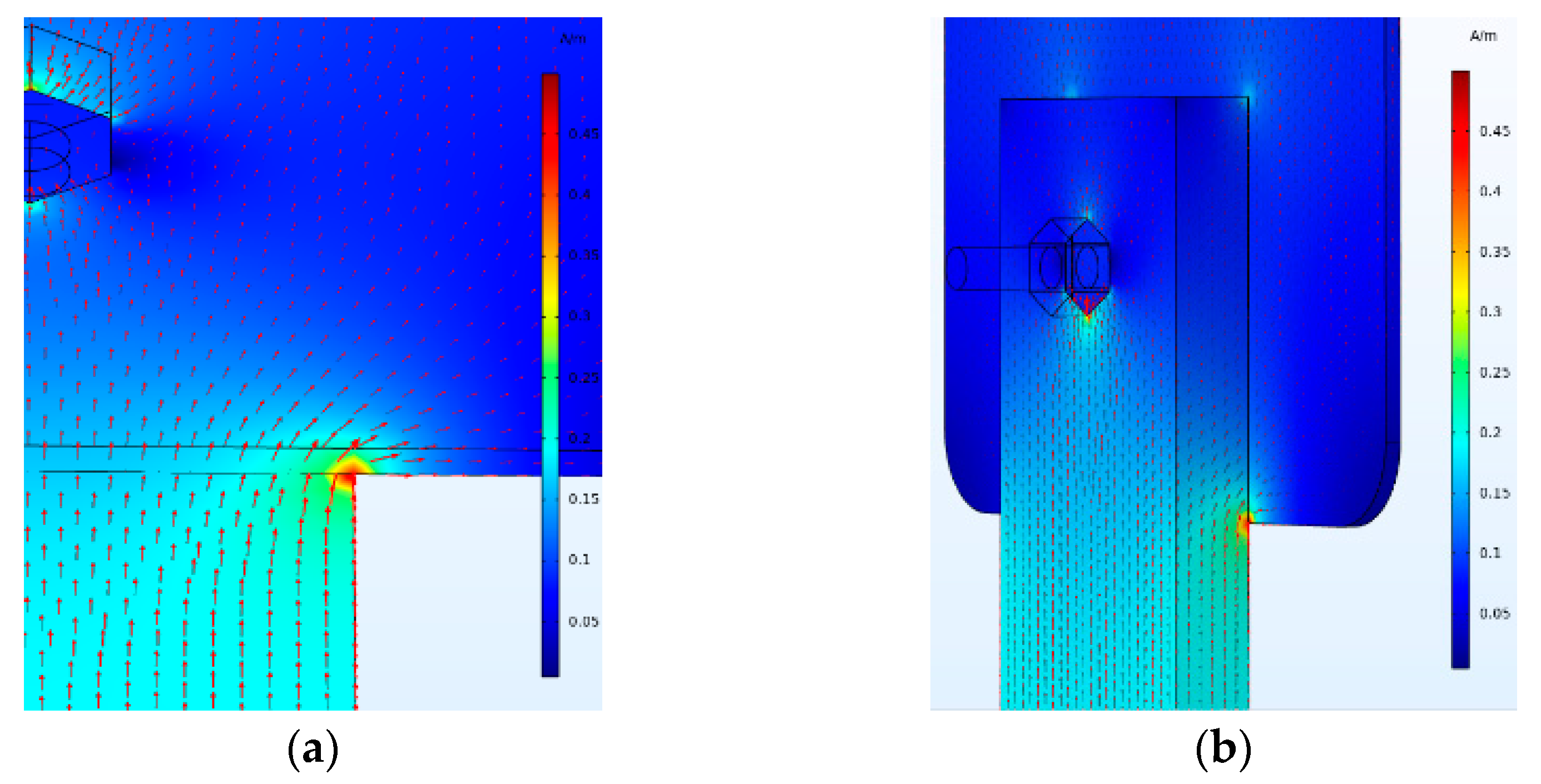
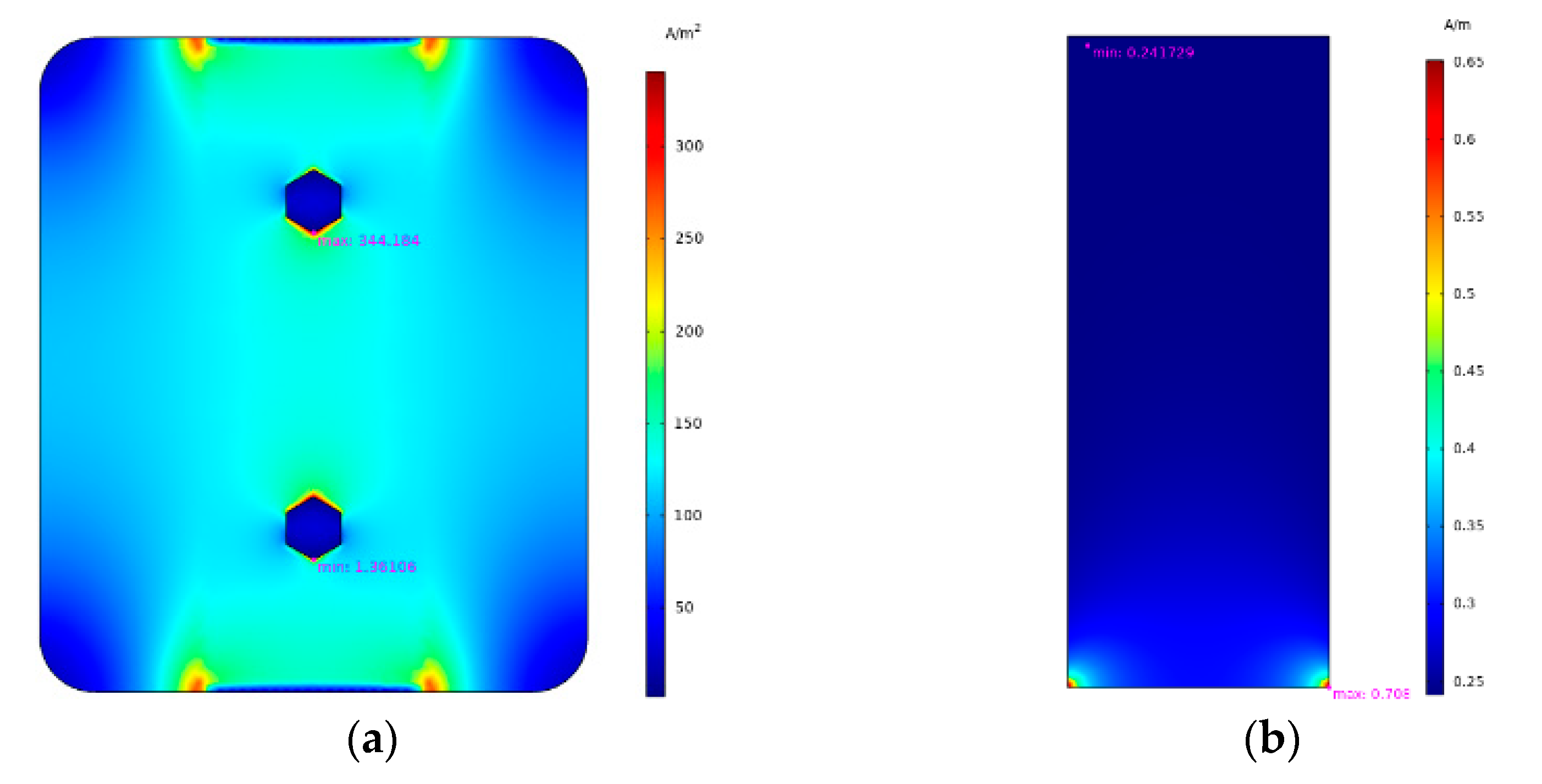
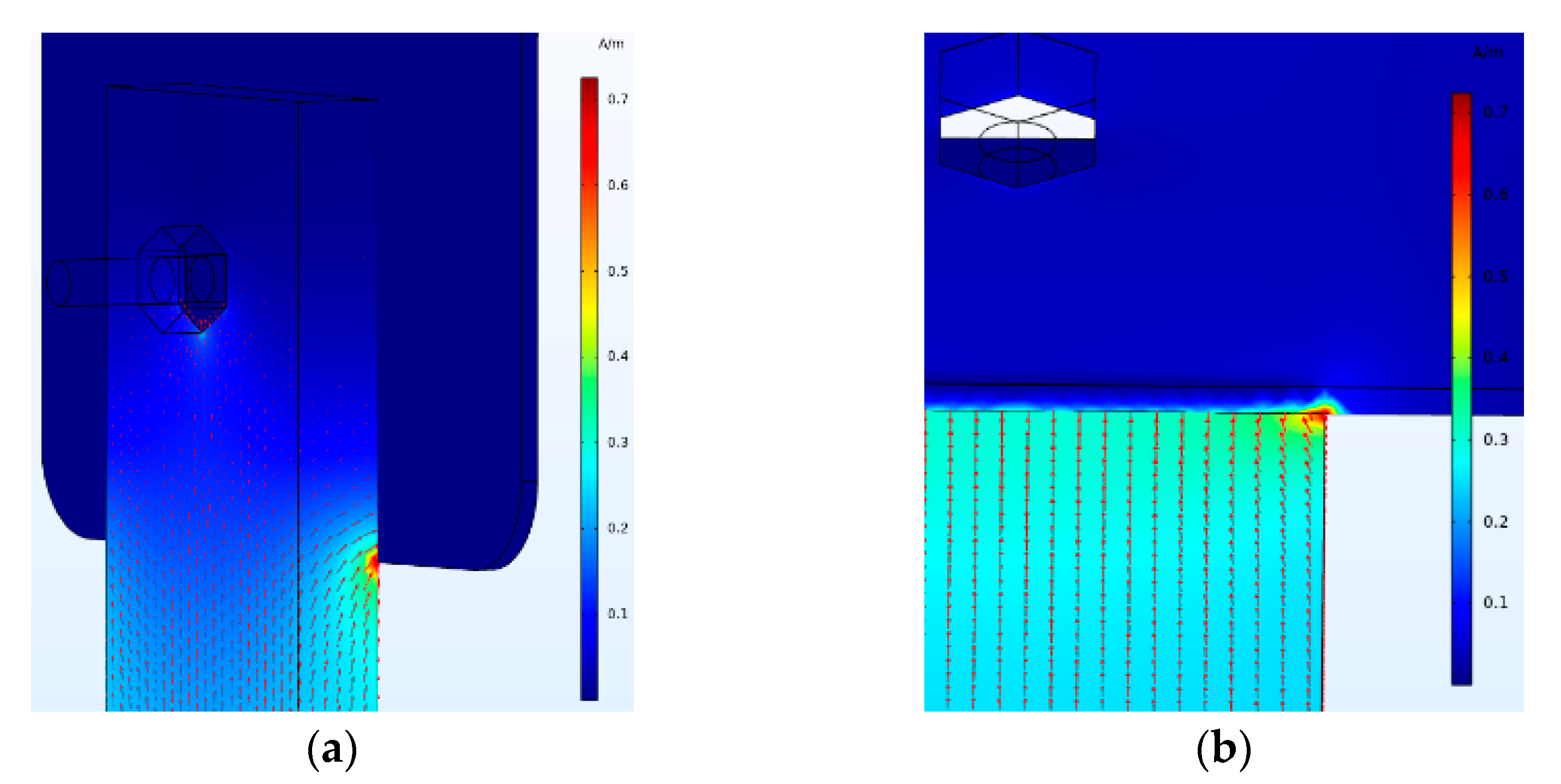
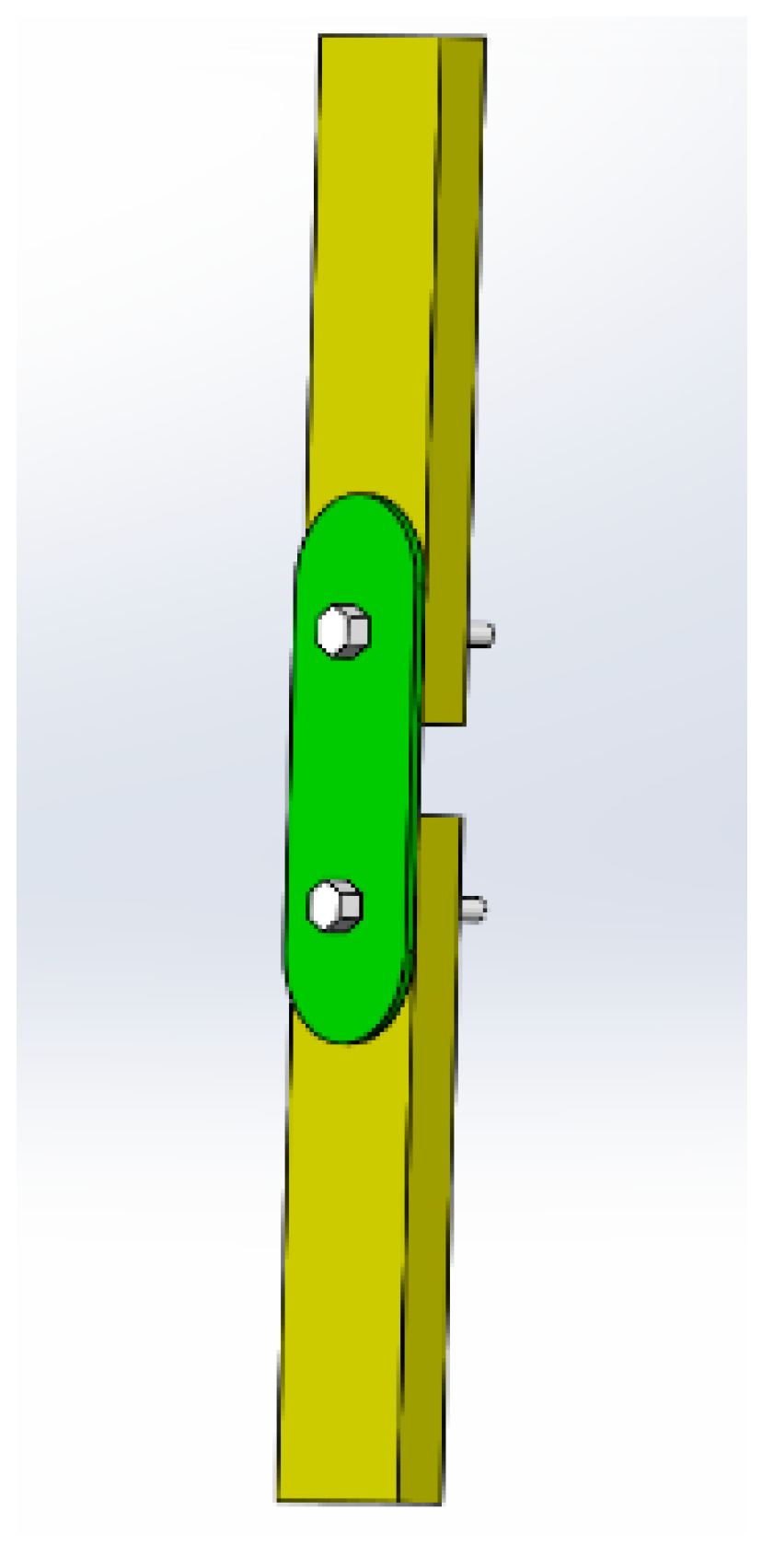
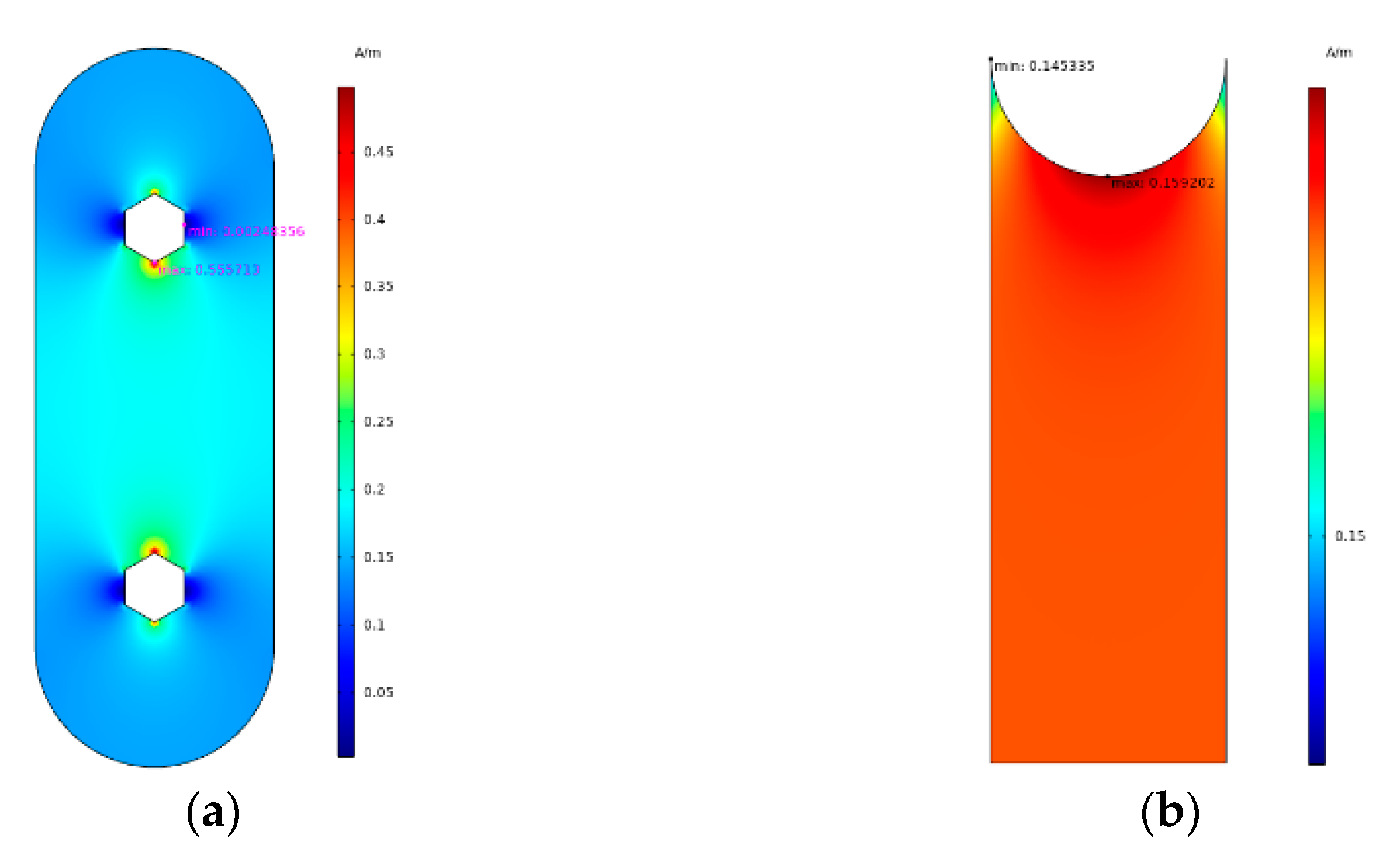

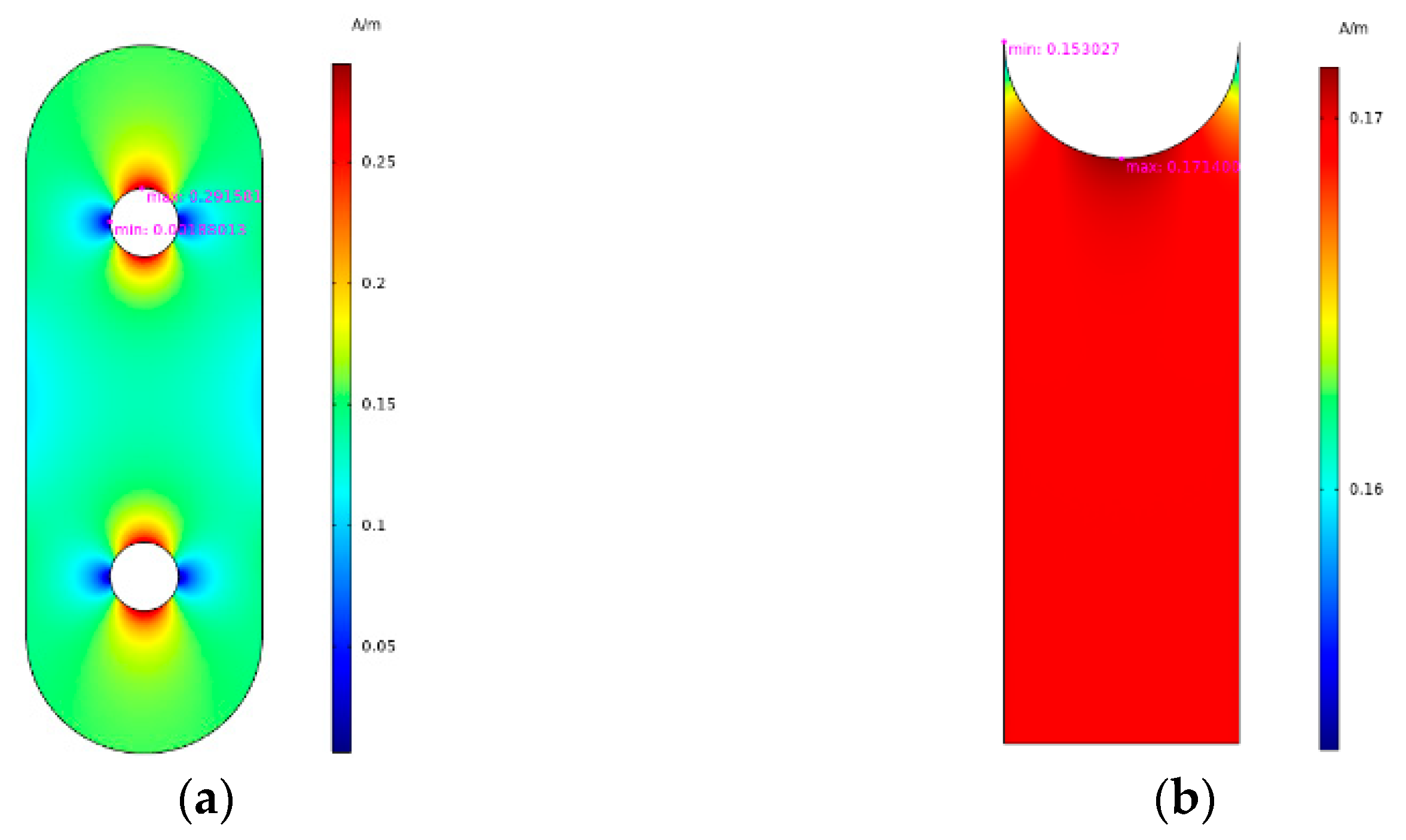
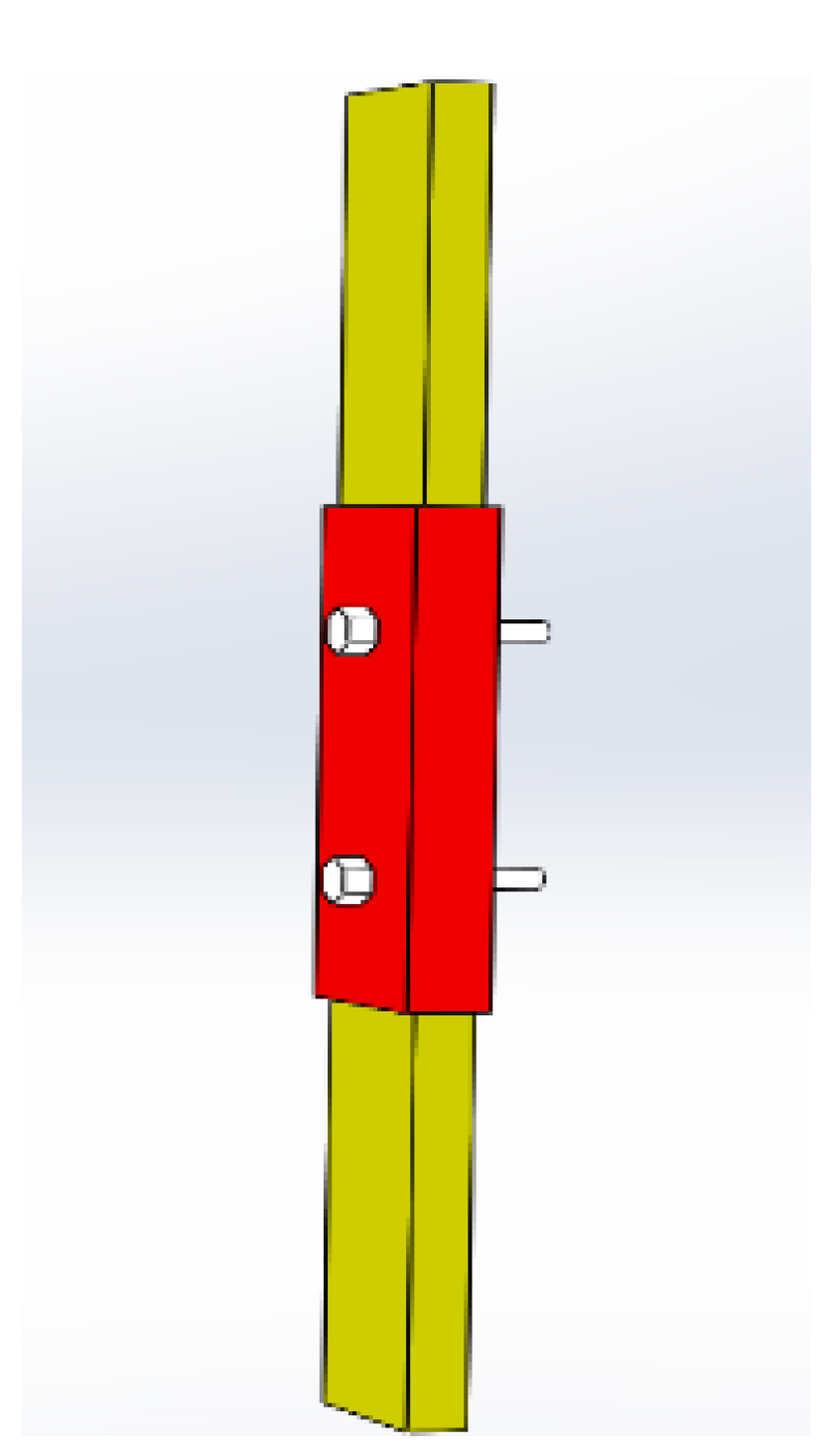
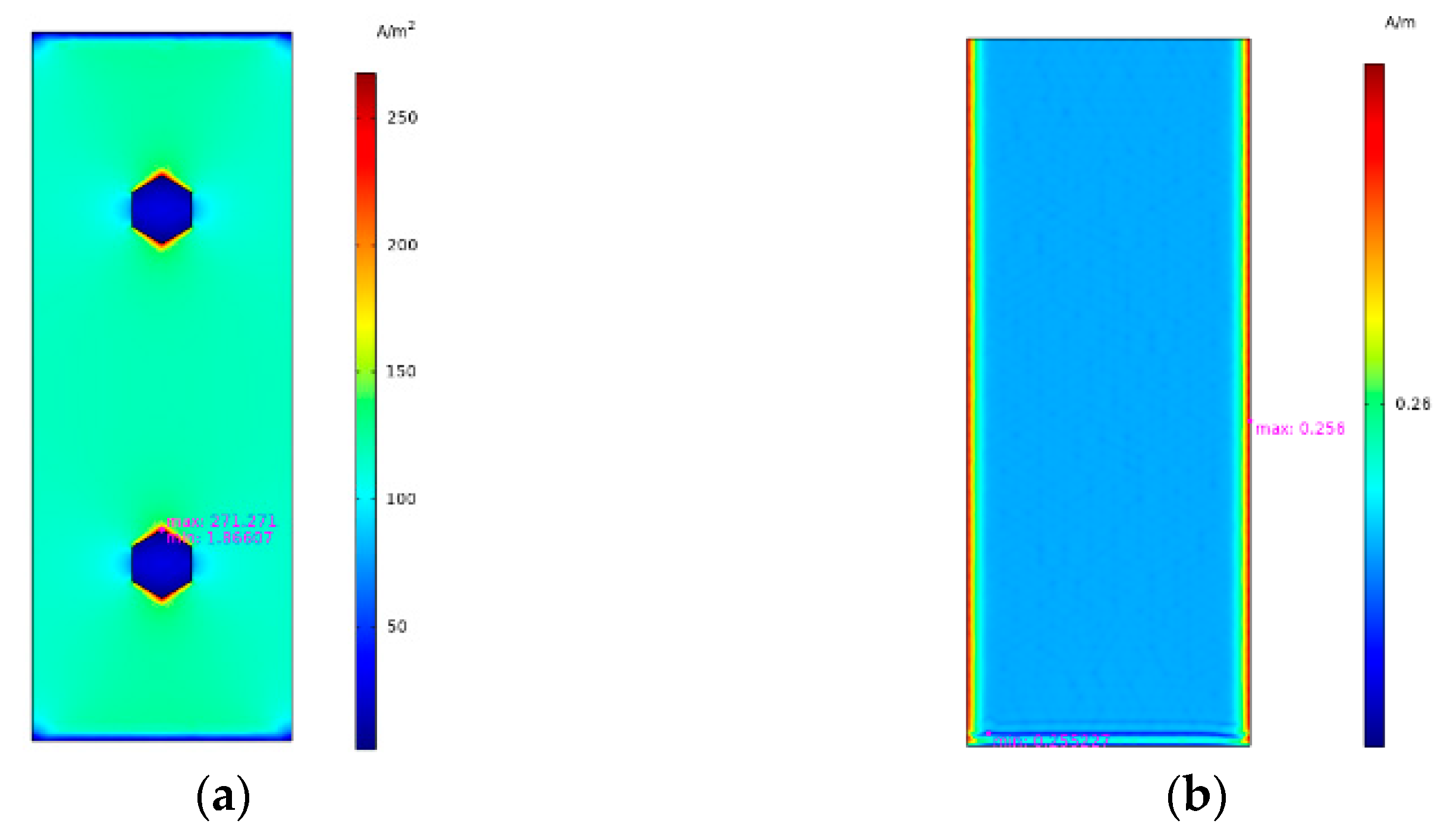

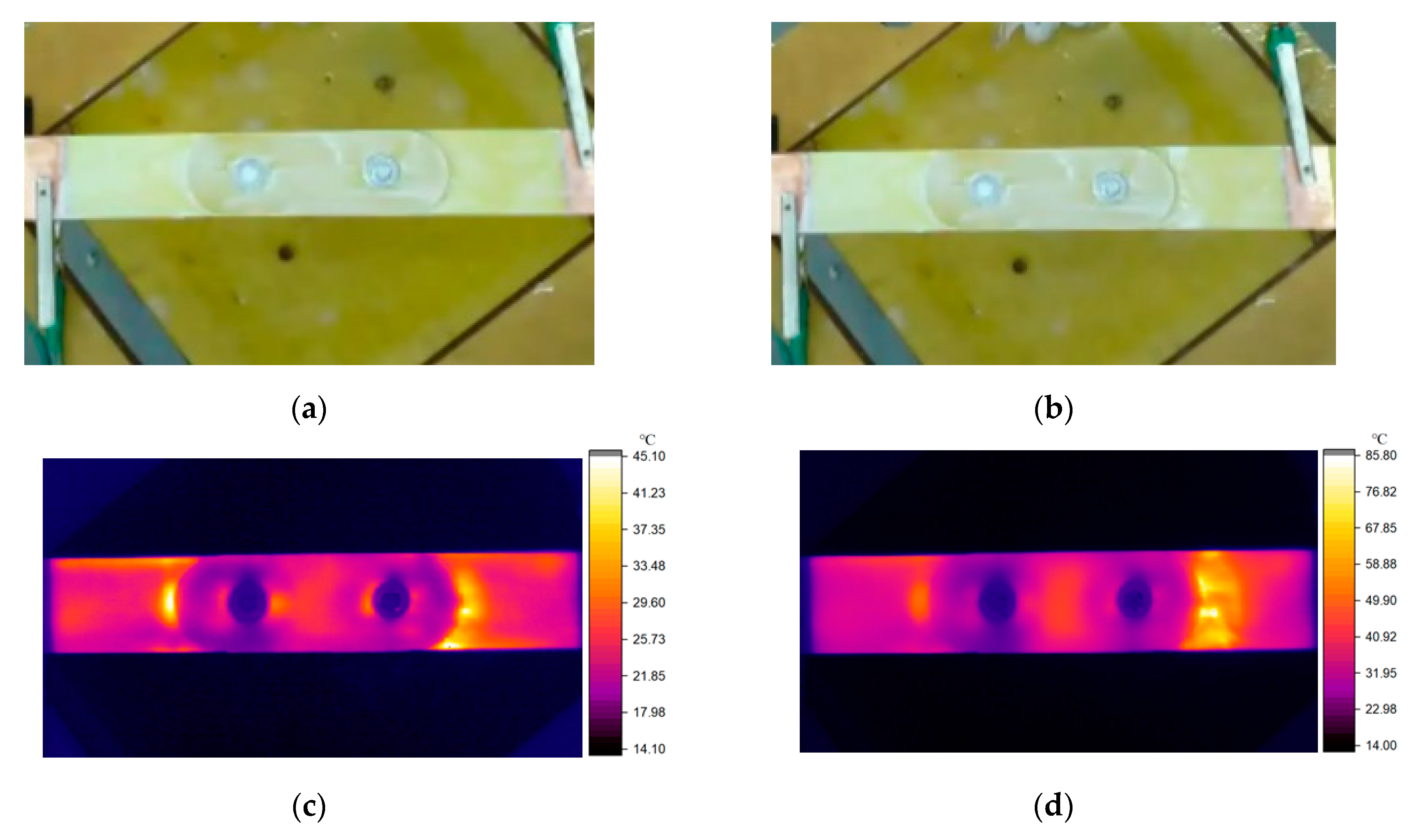
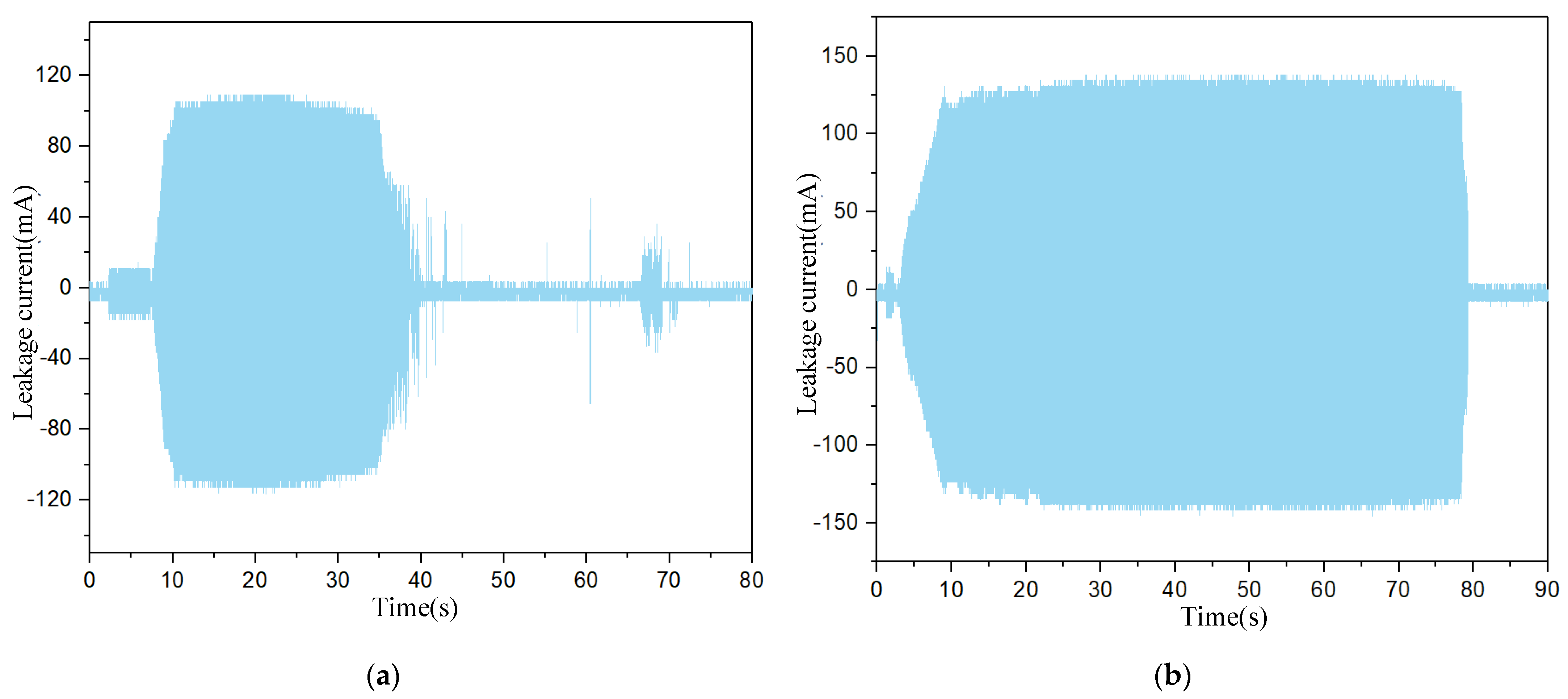
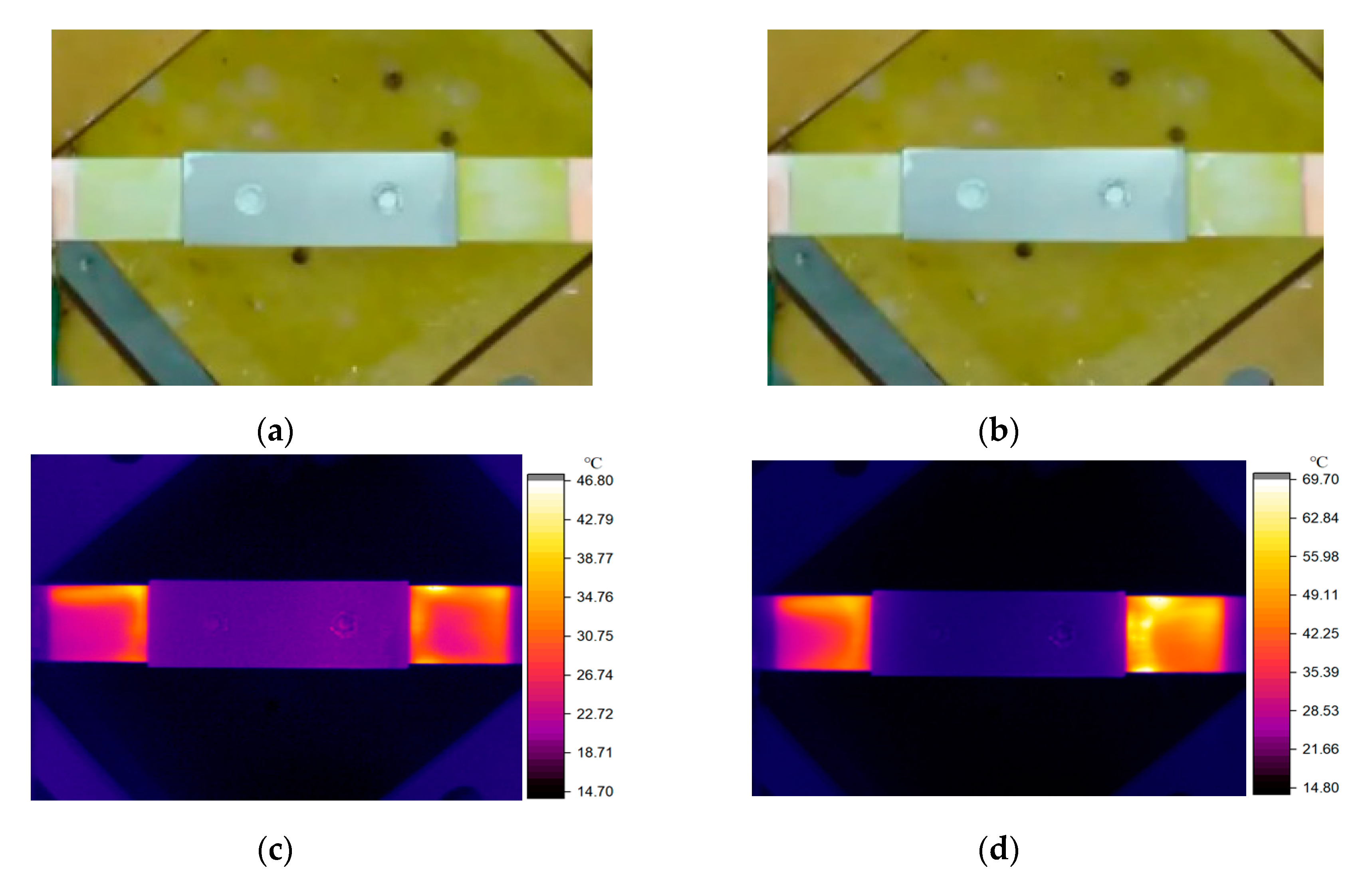
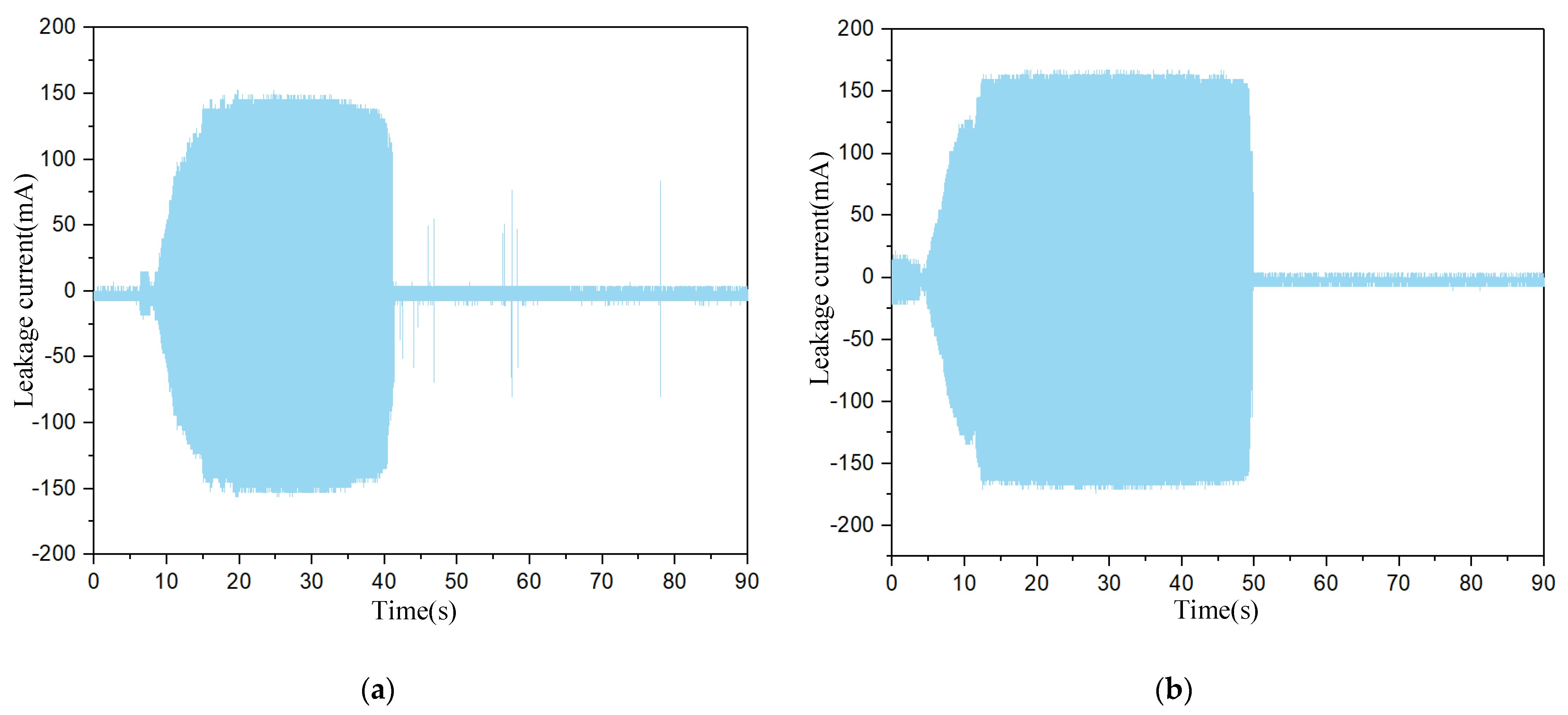
| Sort | Size/mm |
|---|---|
| Connection rod | 150 × 40 × 10 |
| Connection plate | 120 × 100 × 2 |
| Metal nut | The tangent circle is 10 in diameter and 5 in thickness |
| Metal screw | 30 in length and 5 in diameter |
| Electrothermal Parameters | Composite Plate Composite Rod | Metal Plate Metal Sleeve | Nut Screw | Contaminated Layer |
|---|---|---|---|---|
| Conductivity(S/m) | 2.1 × 10−18 | 1 × 107 | 1 × 107 | 0.2 |
| Relative dielectric constant | 4 | 1 × 108 | 1 × 108 | 20 |
| Perveance(W/(m2·K)) | 0.43 | 400 | 400 | 0.55 |
| Density(kg/m3) | 1673 | 8960 | 8960 | 1030 |
| Heat capacity at constant pressure(J/(kg·K)) | 1000 | 385 | 385 | 2000 |
| Connection Form | Current Density A/m2 | |
|---|---|---|
| Connection Point | Bolt | |
| Original composite plate connection | 1080 | 700 |
| Single round composite plate connection | 318 | 1100 |
| Parallel round composite plate connection | 340 | 580 |
| Connection Form | Current Density A/m2 | |
|---|---|---|
| Connection Point | Metal Plate | |
| Metal plate connection | 1416 | 344 |
| Metal sleeve connection | 512 | 271 |
Disclaimer/Publisher’s Note: The statements, opinions and data contained in all publications are solely those of the individual author(s) and contributor(s) and not of MDPI and/or the editor(s). MDPI and/or the editor(s) disclaim responsibility for any injury to people or property resulting from any ideas, methods, instructions or products referred to in the content. |
© 2023 by the authors. Licensee MDPI, Basel, Switzerland. This article is an open access article distributed under the terms and conditions of the Creative Commons Attribution (CC BY) license (https://creativecommons.org/licenses/by/4.0/).
Share and Cite
Hao, J.; Huang, J.; Fang, Z.; He, X.; Wu, Q.; Gu, X.; Wang, Y.; Wu, H. Suppression Measures of Partial Discharge at Rod–Plate Connection in Composite Tower. Energies 2023, 16, 3712. https://doi.org/10.3390/en16093712
Hao J, Huang J, Fang Z, He X, Wu Q, Gu X, Wang Y, Wu H. Suppression Measures of Partial Discharge at Rod–Plate Connection in Composite Tower. Energies. 2023; 16(9):3712. https://doi.org/10.3390/en16093712
Chicago/Turabian StyleHao, Jinpeng, Jinzhu Huang, Ziyi Fang, Xiao He, Qiang Wu, Xiaolong Gu, Yu Wang, and Hong Wu. 2023. "Suppression Measures of Partial Discharge at Rod–Plate Connection in Composite Tower" Energies 16, no. 9: 3712. https://doi.org/10.3390/en16093712
APA StyleHao, J., Huang, J., Fang, Z., He, X., Wu, Q., Gu, X., Wang, Y., & Wu, H. (2023). Suppression Measures of Partial Discharge at Rod–Plate Connection in Composite Tower. Energies, 16(9), 3712. https://doi.org/10.3390/en16093712






